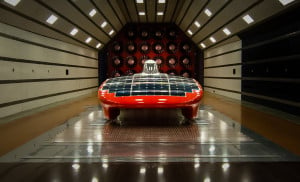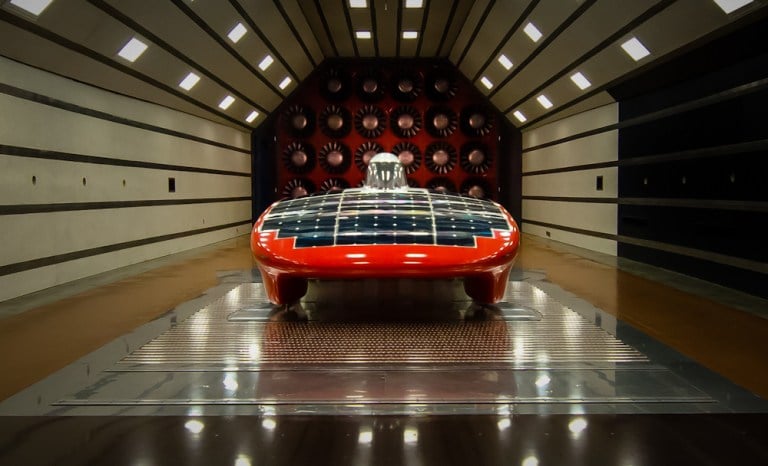Placing fourth overall, Stanford’s handmade solar racecar, Luminos, was the top American finisher at the 2013 Bridgestone World Solar Challenge.
Luminos raced nearly 2,000 miles across the Australian outback over the course of five days, competing against 39 teams from 23 countries. The Stanford team finished 10 km behind the third place team, University of Twente and Saxion in the Netherlands.
The race started from Darwin on Oct. 6 and ended in Adelaide on Oct. 10. Luminos has logged over 6,000 miles in its lifetime and traveled its last 4,000 miles with zero component failures.
“As a driver, I feel very glad that we had the car we did,” said Jason Trinidad ’16. “There were a lot of high winds and Luminos was a very stable car. Other teams got pushed around a lot by the wind.”
Weighing in at 375 pounds, Luminos was built to endure harsh weather conditions. During most of the race, Luminos encountered up to 60 mph crosswinds that forced several other teams to pull over to the side road due to mechanical failures.

“The trick was that the worse the weather got, the better it would be for us, because we were less likely to break down through the wind and the rain,” said Ian Girard ’11 M.S. ’11, mechanical team co-leader for the Stanford Solar Car Project.
Strategic pre-race planning played a large role in the team’s successful strategy this year. The team members were able to foresee various potential obstacles through repeated testing that gave them a significant edge.
“We were able to run a lot of strategy models before the race determining when to go fast and when not to go fast,” Girard said. “We do a lot of pre-planning and logistics to minimize the number of unexpected problems that we are going to get, but you can’t predict everything.”
In the last day of the race, Luminos encountered a heavy rainstorm that soaked the entire car. Fortunately, the team had the foresight to design the electronic components to be waterproof.
With only 15 students flying to Australia to compete in the challenge, the Stanford team, made up mainly of undergraduate students, was one of the smallest taking part in the race. According to Girard, the top three teams consisted of graduate students who took quarters off to devote time to the project.
Girard said that the Stanford volunteers were able to get ready despite taking a full course load and being involved with other extracurricular activities.
While the team obtained a commendable result this time, Girard believes that Stanford possesses the potential to surpass other teams in future competitions.
“This time we proved that we can finish the race by building a durable car that can go the whole way,” Girard said. “I think future teams can work a little more seriously towards making the car lighter and working on the smaller improvements that separate the fourth place from first, second and third place.”
With the race over, the team plans to spend the rest of the quarter travelling in New Zealand and Australia or fly home to spend more time with family members.
“I haven’t seen my family since January, as I have been working on the car,” Trinidad said. “I want to go home, and I’m looking forward to that.”
Contact Helin Gao at helingao ‘at’ stanford.edu
